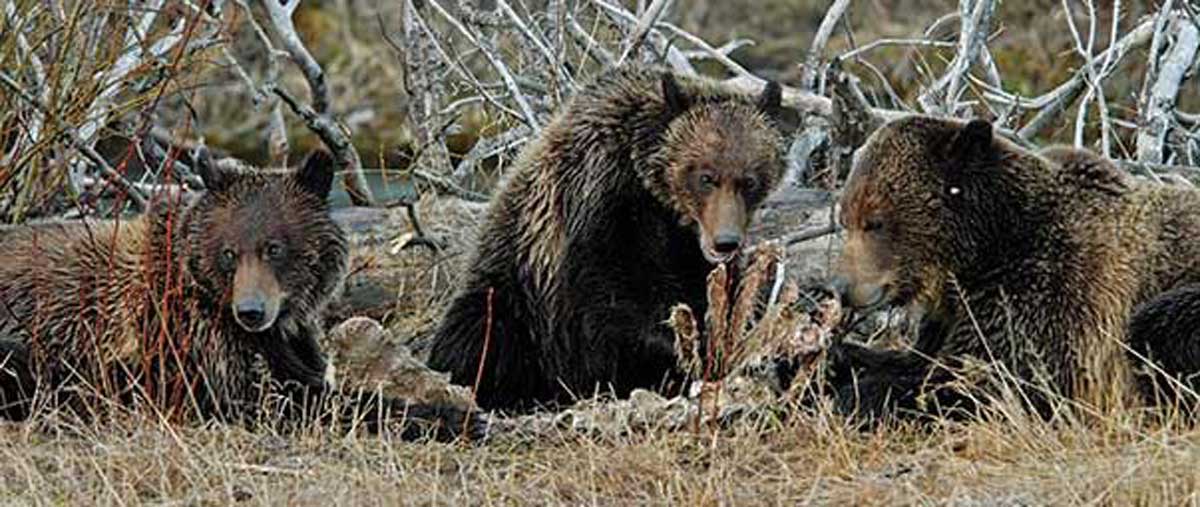Below is the public comment letter submitted by the Rocky Mountain Elk Foundation to the U.S. Fish and Wildlife Service regarding the proposal to remove Yellowstone-area grizzly bears from federal protections and shift them to state management.
May 10, 2016
Public Comments Processing
Attn: Docket No. FWS-R6-ES-2016-0042
U.S. Fish and Wildlife Service
MS: BPHC
5275 Leesburg Pike
Falls Church, VA 22041-3803
The Rocky Mountain Elk Foundation (RMEF) appreciates the opportunity to comment on the U.S. Fish and Wildlife Service (FWS) proposal to remove grizzly bears in the Greater Yellowstone Ecosystem (GYE) from the Federal List of Endangered and Threatened Wildlife.
We believe the grizzly population is fully recovered and all management authority should be transferred to state wildlife agencies. The FWS proposal is based on the best available science and reflects the cooperative efforts of state, federal and non-governmental organizations over the past 40 years to better understand the bear’s habitat requirements. The information gained and implemented from these strategies helped grizzlies recover to the point where their populations are sustainable. Removing GYE grizzlies from federal listing and transferring management authority to state wildlife agencies is not only appropriate at this time, but also brings into play a number of strategies—including limited, regulated hunting—that will ensure their long-term viability.
RMEF supports the proposal for four primary reasons: (1) all grizzly bear recovery goals have been met; (2) studies have determined the GYE grizzly is adaptable to changes in its habitat; (3) delisting of the bear and transferring its management to state wildlife agencies ensures continued conservation of the species while also increasing funding for grizzly habitat conservation and management; and (4) the conservation strategy includes every possible safety net, including triggers for relisting.
Recovery Criteria Met
The primary reason for delisting the population is recognition that the criteria included in the FWS GYE grizzly bear recovery plans of 1982, 1993 and 2007 have been met. Demographic Recovery Criterion 1 (1982) required a minimum population of at least 500 grizzly bears. That was met in 2002 and populations have grown to an estimate of nearly 800 bears.
Demographic Recovery Criterion 2 (1993) required a distribution of female bears with young in 16 of the 18 Recovery Zone’s Bear Management Units (BMU), with no two adjacent BMUs unoccupied during a six-year window of observations. This has been exceeded each year since 1999.
State management will meet Demographic Recovery Criterion 3 which is maintaining the grizzly population around the 2002-2014 modeled (Chao 2) average of 674 bears (95% CI = 600-747) and by maintaining annual mortality limits for independent females, independent males and dependent young.
State wildlife agencies have the capacity to conduct extensive monitoring on parameters that will be important to ensuring a recovered population. These parameters include but are not limited to reproduction, natural and human-caused mortality, habitat quality and the distribution of breeding females.
Adaptability
The 2013 Interagency Grizzly Bear Food Synthesis Report demonstrated the grizzly bear is extremely adaptable when faced with a reduction in one of its forage components. These findings reinforce the bear population’s resiliency and the ability of proper management to provide for its health into the future. Using this science reinforces state and federal commitments to ensuring healthy grizzly populations.
State Agency and Hunter Contributions to Management
State wildlife agencies in Montana, Idaho and Wyoming have collectively spent millions of dollars over the last four decades on programs to study grizzlies and their habitat requirements, monitor their populations and conserve their habitat. These efforts were made possible by the hunters and anglers of these states who purchase hunting and fishing licenses to pursue their passions while helping fund other important wildlife programs. This revenue stream will continue to be available for grizzly bear conservation under state management—and will be significantly enhanced if states are able to sell limited opportunities for grizzly bear hunting.
Given the facts that FWS grizzly bear recovery goals have been met, bears have demonstrated they are adaptable and state resources for continued conservation are in place, the time is right to remove GYE grizzlies from federal protection. This position is supported by the Interagency Grizzly Bear Committee; the recently retired FWS grizzly bear recovery coordinator; the states of Montana, Idaho and Wyoming; and more than 220,000 RMEF members.
Thank you for the opportunity to provide comments on this proposal.
Sincerely,
David Allen
President & CEO
